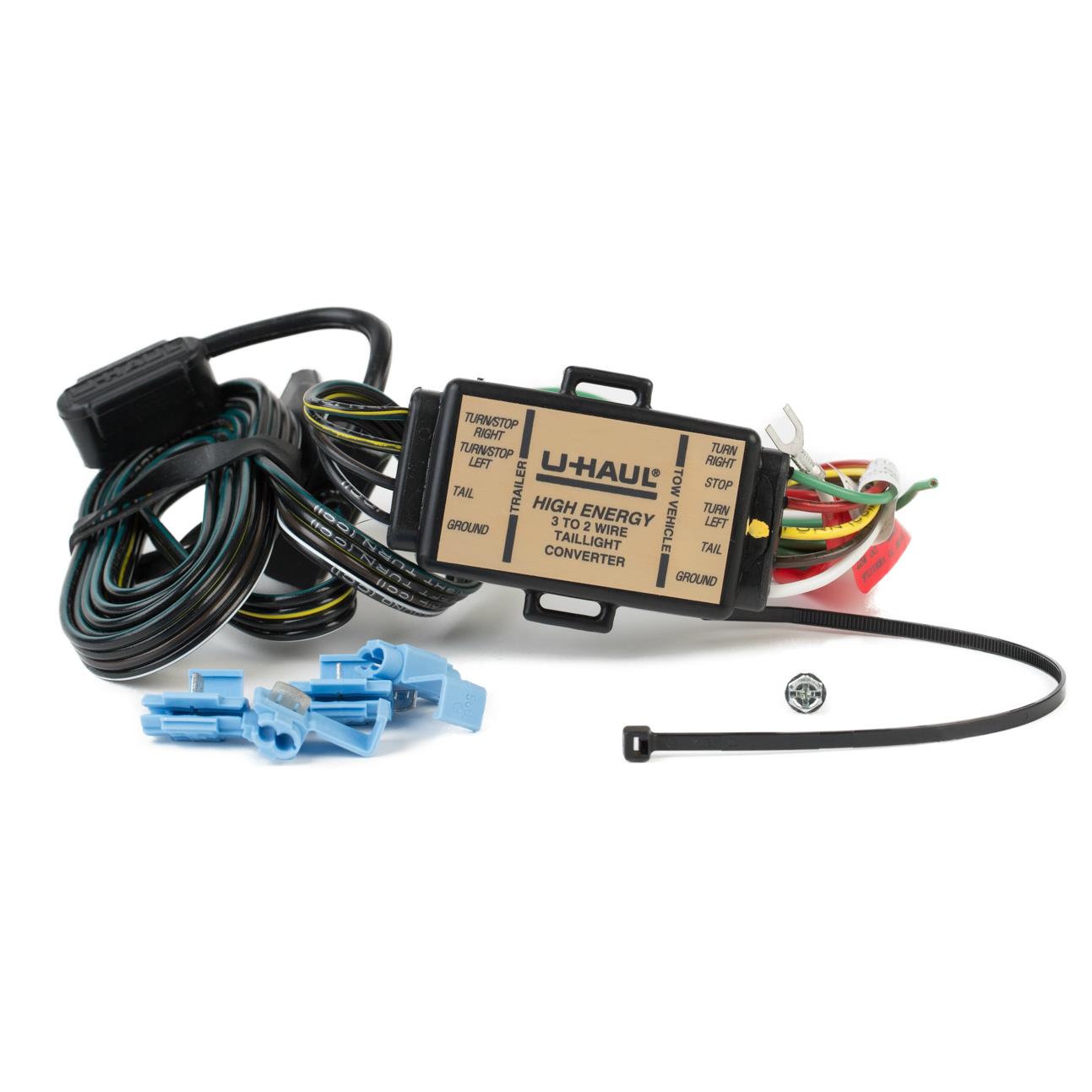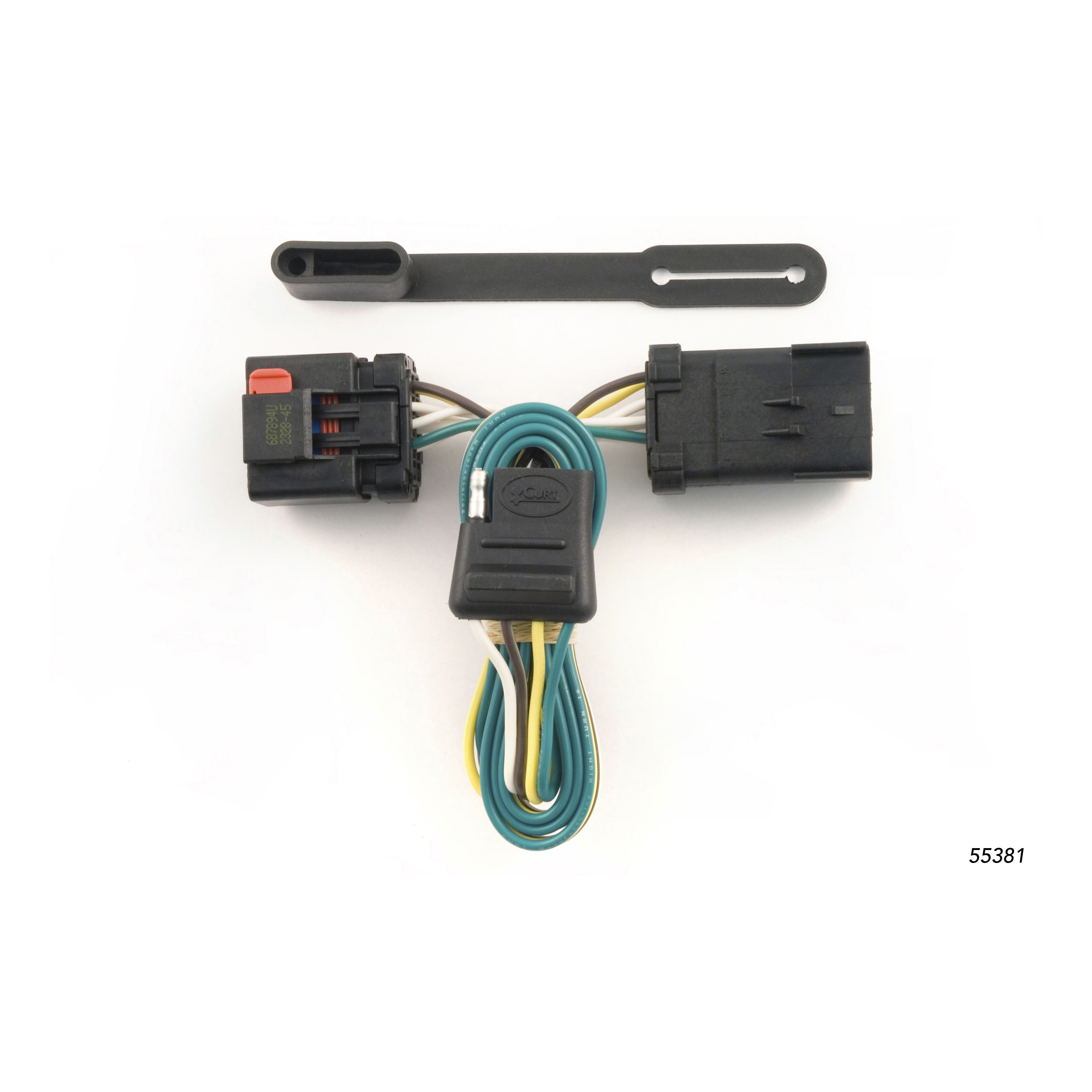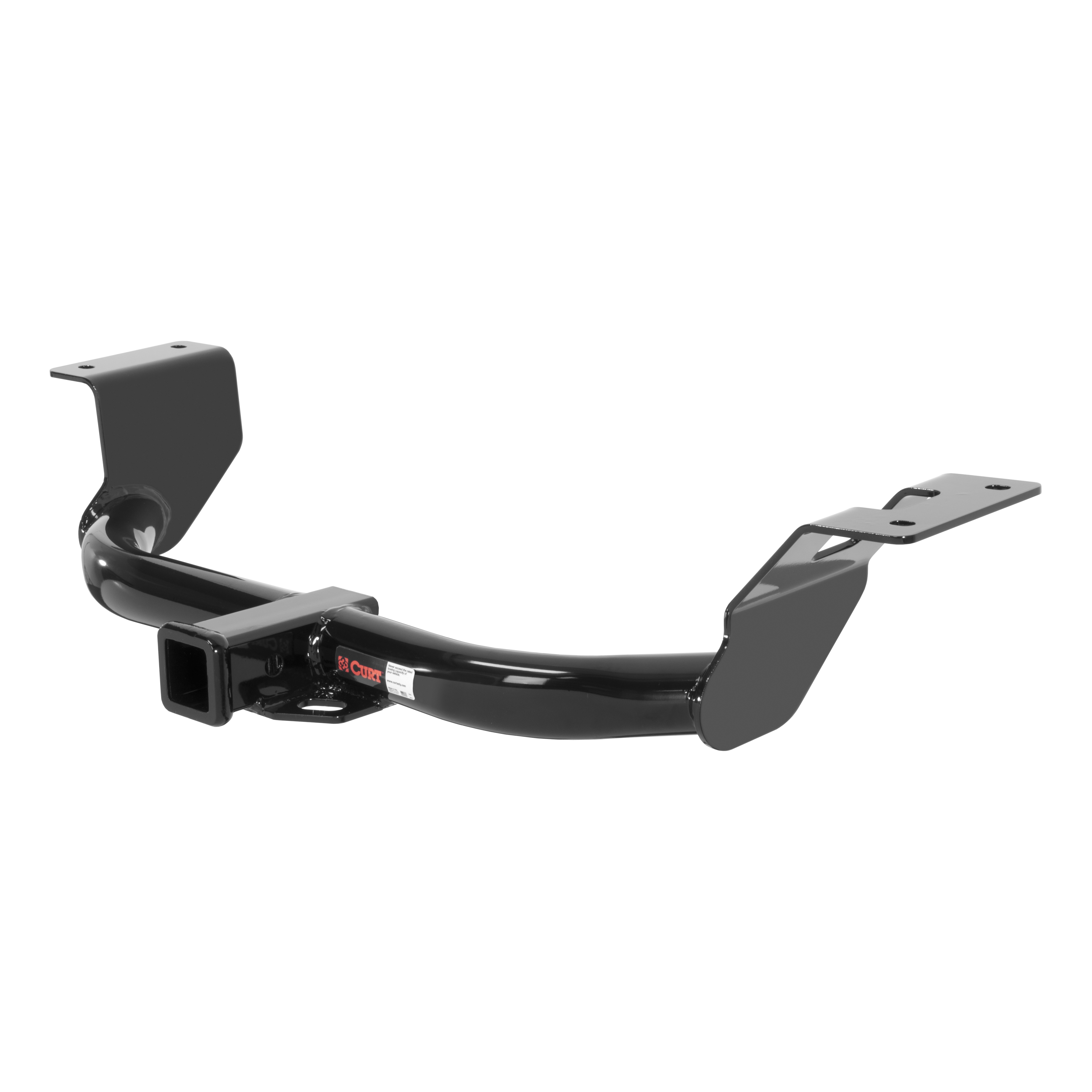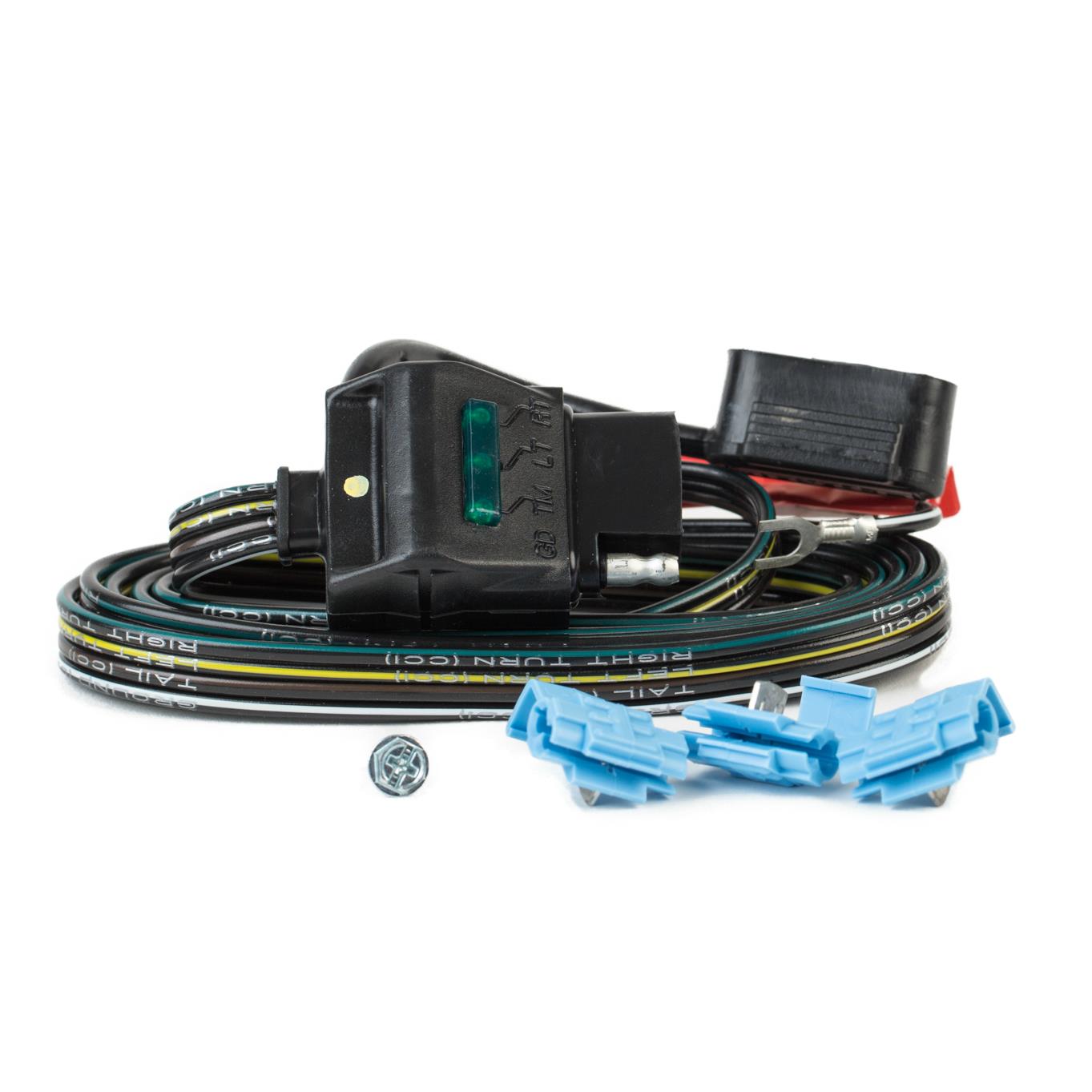U Haul Trailer Wiring is a system of electrical connections that enables a towing vehicle to communicate with a towed trailer. For instance, a U Haul trailer wiring harness allows the towing vehicle’s turn signals, brake lights, and running lights to operate the corresponding lights on the trailer.
U Haul Trailer Wiring is essential for safe trailering. It ensures that the trailer’s lights are functioning properly, making the trailer more visible to other drivers. Additionally, U Haul Trailer Wiring can power auxiliary functions on the trailer, such as electric brakes or interior lighting. A key historical development in U Haul Trailer Wiring was the introduction of standardized connectors in the 1970s.
This article will provide a comprehensive guide to U Haul Trailer Wiring, including its components, installation, and troubleshooting.
Understanding the key aspects of U Haul Trailer Wiring is essential for safe and efficient trailering. These aspects encompass various dimensions of U Haul Trailer Wiring, including its components, functions, and installation.
- Components: Connectors, wires, relays
- Functions: Powering trailer lights, brakes, signals
- Installation: Wiring diagrams, tools, safety precautions
- Troubleshooting: Identifying and resolving wiring issues
- Safety: Ensuring proper electrical connections, preventing accidents
- Compatibility: Matching wiring systems to vehicle and trailer specifications
- Customization: Adding additional features, such as reverse lights or battery charging
- Regulations: Adhering to industry standards and legal requirements
These aspects are interconnected and play vital roles in the overall functionality, safety, and legality of U Haul Trailer Wiring. For instance, proper installation ensures reliable electrical connections, preventing potential hazards such as short circuits or fires. Compatibility between the wiring systems of the towing vehicle and trailer is crucial for seamless communication and operation of the trailer’s lights and brakes. Understanding these aspects empowers individuals to make informed decisions, troubleshoot issues, and ensure the safe and compliant operation of their U Haul Trailer Wiring systems.
Components
In the realm of U Haul Trailer Wiring, components such as connectors, wires, and relays play a pivotal role in establishing and maintaining electrical connections between the towing vehicle and the trailer. These components work in harmony to ensure the proper functioning of the trailer’s lighting system, brakes, and other electrical accessories.
Connectors serve as the interface between the wiring systems of the towing vehicle and the trailer. They allow for the transmission of electrical signals and power between the two, enabling the trailer’s lights, brakes, and other functions to operate in conjunction with the towing vehicle. Wires, on the other hand, act as the pathways for these electrical signals and power, carrying them from the towing vehicle to the trailer and vice versa. Relays, in turn, control the flow of electricity within the wiring system, ensuring that the appropriate amount of power is delivered to the trailer’s components.
The failure of any of these components can disrupt the electrical connection between the towing vehicle and the trailer, leading to malfunctioning lights, brakes, or other issues. Therefore, it is essential to ensure that these components are in good working condition and properly connected. Regular inspection and maintenance of U Haul Trailer Wiring, including its components, can help identify and resolve potential problems before they manifest as safety hazards.
Functions
Within the context of U Haul Trailer Wiring, its functions extend beyond the basic transmission of power. U Haul Trailer Wiring is designed to fulfill specific purposes, primarily the powering of trailer lights, brakes, and signals. This intricate system ensures the safe and compliant operation of towed trailers, enabling them to communicate effectively with other vehicles on the road.
- Illumination: U Haul Trailer Wiring provides power to the trailer’s lighting system, including tail lights, brake lights, turn signals, and clearance lights. These lights are essential for ensuring the visibility of the trailer, especially during nighttime or low-visibility conditions, enhancing safety for both the towing vehicle and other road users.
- Braking: U Haul Trailer Wiring also plays a crucial role in the operation of the trailer’s braking system. By transmitting electrical signals between the towing vehicle and the trailer, it enables the trailer’s brakes to respond in sync with the towing vehicle’s braking system. Proper functioning of the braking system is paramount for maintaining control and ensuring the safety of the entire towing unit.
- Signaling: U Haul Trailer Wiring facilitates the communication of the trailer’s intended maneuvers to other road users. It provides power to the trailer’s turn signals, enabling drivers to indicate their intentions to turn or change lanes, enhancing overall safety and reducing the risk of accidents.
- Auxiliary Functions: In addition to powering essential lighting, braking, and signaling systems, U Haul Trailer Wiring can also support auxiliary functions within the trailer. This may include powering interior lights, electric brakes, or other electrical accessories, depending on the specific design and configuration of the trailer.
In summary, the functions of U Haul Trailer Wiring extend beyond mere power transmission. It encompasses the powering of trailer lights, brakes, and signals, enabling safe and compliant operation on the road. Understanding these functions is essential for proper installation, maintenance, and troubleshooting of U Haul Trailer Wiring systems, ensuring the safety and reliability of towed trailers.
Installation
The installation process of U Haul Trailer Wiring encompasses various aspects, including the utilization of wiring diagrams, appropriate tools, and adherence to safety precautions. These elements play a critical role in ensuring the proper functioning, reliability, and safety of the trailer wiring system.
- Wiring Diagrams: Wiring diagrams serve as visual guides that provide detailed instructions on how to connect the trailer wiring to the towing vehicle’s electrical system. They specify the correct wire colors, terminal locations, and connection points, ensuring accurate and efficient installation.
- Tools: The installation of U Haul Trailer Wiring requires the use of specific tools, such as wire strippers, crimpers, and electrical tape. These tools enable precise cutting, stripping, and connecting of wires, ensuring secure and reliable electrical connections.
- Safety Precautions: Safety precautions should always be prioritized during the installation process. This includes wearing appropriate safety gear, such as gloves and safety glasses, and following proper procedures to avoid electrical shocks or other hazards.
- Testing: Once the wiring is installed, it is crucial to thoroughly test the system to ensure proper functionality. This involves verifying the operation of the trailer lights, brakes, and signals, both independently and in conjunction with the towing vehicle.
By carefully following the wiring diagrams, using the appropriate tools, adhering to safety precautions, and conducting thorough testing, individuals can ensure the successful installation of their U Haul Trailer Wiring, promoting safe and reliable trailer operation. Neglecting any of these aspects can lead to improper connections, electrical faults, or even safety hazards, emphasizing the importance of meticulous attention to detail and adherence to best practices.
Troubleshooting
In the context of U Haul Trailer Wiring, troubleshooting plays a critical role in ensuring the proper functioning, safety, and reliability of the trailer wiring system. Troubleshooting involves identifying and resolving wiring issues that may arise during installation, operation, or maintenance of the wiring system. These issues can manifest in various forms, such as malfunctioning lights, intermittent electrical connections, or complete failure of the wiring system.
Troubleshooting U Haul Trailer Wiring requires a systematic approach that involves identifying the root cause of the issue and implementing appropriate solutions. This may include inspecting wiring connections for loose or damaged wires, checking for blown fuses or faulty relays, and verifying the compatibility of the wiring system with the towing vehicle and trailer. By addressing these issues promptly and effectively, individuals can restore the proper functionality of the trailer wiring system, ensuring safe and reliable trailer operation.
One common example of a wiring issue in U Haul Trailer Wiring is the failure of the trailer lights to function properly. This can be caused by a variety of factors, such as loose connections, damaged wires, or a faulty light bulb. By systematically troubleshooting the wiring system, the root cause of the issue can be identified and resolved, restoring the functionality of the trailer lights. Another example is the intermittent operation of the trailer brakes, which can be caused by faulty wiring connections or a malfunctioning brake controller. By identifying and resolving these wiring issues, the safety and reliability of the trailer braking system can be maintained.
The practical applications of understanding troubleshooting techniques for U Haul Trailer Wiring extend beyond resolving immediate issues. By gaining a deeper understanding of the wiring system and its potential failure points, individuals can proactively maintain and inspect the wiring, reducing the likelihood of problems occurring in the future. Additionally, troubleshooting skills empower individuals to diagnose and resolve wiring issues independently, saving time and resources that would otherwise be spent on professional repairs.
Safety
In the realm of U Haul Trailer Wiring, safety takes precedence, as improper electrical connections can lead to unforeseen hazards and accidents. To mitigate these risks, ensuring proper electrical connections is paramount, encompassing various aspects that contribute to the overall safety and reliability of the trailer wiring system.
- Secure Connections: Loose or damaged electrical connections can lead to intermittent or complete loss of power to the trailer lights, brakes, or other electrical components. Proper installation and regular inspection of all connections, including those at the tow vehicle, trailer, and any intermediate connectors, help prevent these issues.
- Adequate Wiring: Using wiring with insufficient gauge or insulation can result in overheating, electrical shorts, or fires. Ensuring that the wiring system is appropriately sized and rated for the intended load prevents these hazards.
- Proper Grounding: A reliable electrical ground is crucial for the proper functioning of the trailer wiring system, as it provides a safe path for excess electrical current. Establishing a good ground connection between the towing vehicle and the trailer helps prevent electrical malfunctions and ensures the safety of the entire towing unit.
- Fuses and Circuit Breakers: Protective devices such as fuses and circuit breakers safeguard the trailer wiring system from electrical overloads or short circuits. These devices interrupt the flow of electricity when it exceeds a predetermined level, preventing damage to the wiring or other electrical components.
By adhering to these safety guidelines, ensuring proper electrical connections, and regularly inspecting the trailer wiring system, individuals can proactively prevent accidents, safeguard the integrity of the wiring system, and promote the safe and reliable operation of their towed trailers. Overlooking these safety aspects can compromise the functionality and safety of the entire towing unit, potentially leading to hazardous situations on the road.
Compatibility
The compatibility of U Haul Trailer Wiring encompasses the harmonious integration of the towing vehicle’s wiring system with the electrical specifications of the trailer being towed. Ensuring compatibility is essential for the safe and reliable operation of the trailer, enabling seamless communication and functionality of its lighting, braking, and signaling systems.
- Connector Types: Different vehicles and trailers utilize varying connector types, ranging from standard 4-pin flat connectors to more advanced 7-pin round connectors. Matching the connector types ensures a secure electrical connection between the towing vehicle and the trailer.
- Wiring Harness: The wiring harness serves as the backbone of the trailer wiring system, transmitting electrical signals and power throughout the trailer. Selecting a wiring harness compatible with both the towing vehicle and the trailer ensures proper functionality of all electrical components.
- Electrical Load: The electrical load refers to the amount of power drawn by the trailer’s electrical components. Exceeding the capacity of the towing vehicle’s electrical system can lead to overloading and potential electrical hazards. Matching the wiring system to the trailer’s electrical load ensures adequate power supply.
- Custom Modifications: In certain scenarios, custom modifications to the trailer wiring system may be necessary to accommodate specific electrical requirements or accessories. Ensuring compatibility during these modifications requires careful planning and expertise to maintain the integrity and safety of the overall system.
By considering these facets of compatibility, individuals can effectively match the wiring systems of their towing vehicles and trailers, ensuring optimal performance, safety, and compliance with industry standards. Overlooking compatibility issues can lead to electrical malfunctions, reduced visibility, impaired braking capabilities, and potential accidents. Therefore, understanding and addressing compatibility is crucial for the safe and reliable operation of U Haul Trailer Wiring systems.
Customization
Within the realm of U Haul Trailer Wiring, customization extends beyond the basic installation and maintenance of the wiring system. Enthusiasts and professionals alike often seek to enhance the functionality of their trailers by adding additional features, such as reverse lights or battery charging capabilities. These modifications provide increased convenience, safety, and versatility to the overall towing experience.
- Reverse Lights: Installing reverse lights on a trailer enhances visibility and safety when reversing the towing unit. These lights illuminate the area behind the trailer, aiding in maneuvering and reducing the risk of accidents.
- Battery Charging: Equipping a trailer with a battery charging system allows for convenient charging of the trailer’s battery while it is connected to the towing vehicle. This feature is particularly useful for trailers with auxiliary electrical components, such as refrigerators or lighting, ensuring a reliable power supply during extended travels.
- Auxiliary Lighting: Adding auxiliary lighting to a trailer, such as side marker lights or interior lights, enhances visibility and safety, especially during nighttime or low-visibility conditions. These additional light sources provide increased awareness of the trailer’s presence and dimensions.
- Custom Wiring: In certain cases, customized wiring modifications may be necessary to accommodate specific electrical requirements or accessories not originally supported by the standard U Haul Trailer Wiring system. These modifications require careful planning and expertise to ensure compatibility and maintain the integrity of the overall electrical system.
By exploring these customization options and understanding their implications, individuals can tailor their U Haul Trailer Wiring systems to meet their specific needs and preferences. Customization empowers users to enhance the functionality, safety, and overall experience of their trailers, making them more versatile and better suited for various hauling tasks.
Regulations
Within the realm of U Haul Trailer Wiring, regulations encompass a critical aspect ensuring the safety, reliability, and legal compliance of trailer wiring systems. Adhering to industry standards and legal requirements guarantees that trailer wiring meets or exceeds established safety benchmarks and conforms to governing regulations, minimizing risks and promoting responsible trailering practices.
-
Electrical Safety Standards:
U Haul Trailer Wiring must comply with electrical safety standards established by regulatory bodies. These standards dictate the use of appropriate wiring materials, connectors, and installation practices to prevent electrical hazards such as short circuits, fires, and shocks. -
Lighting Regulations:
Trailer lighting systems must adhere to specific regulations regarding the placement, visibility, and functionality of lights. These regulations ensure that trailers are adequately visible to other road users, reducing the risk of accidents and enhancing overall safety. -
Braking Regulations:
Trailer braking systems are subject to regulations that govern their design, performance, and compatibility with towing vehicles. By meeting these regulations, trailer brakes operate effectively, ensuring the safe and controlled stopping of the entire towing unit. -
Compliance Inspections:
In many jurisdictions, trailer wiring systems are subject to periodic inspections to verify compliance with industry standards and legal requirements. These inspections help identify and address potential safety issues, ensuring the continued reliability and legality of trailer wiring systems.
Understanding and adhering to regulations related to U Haul Trailer Wiring is paramount for responsible trailer operation. By meeting these standards, individuals not only enhance the safety of their towing units but also demonstrate their commitment to responsible trailering practices and compliance with legal requirements. Neglecting these regulations can have serious consequences, including accidents, legal liabilities, and fines. Therefore, it is essential to prioritize adherence to industry standards and legal requirements when installing, maintaining, and using U Haul Trailer Wiring systems.









Related Posts








